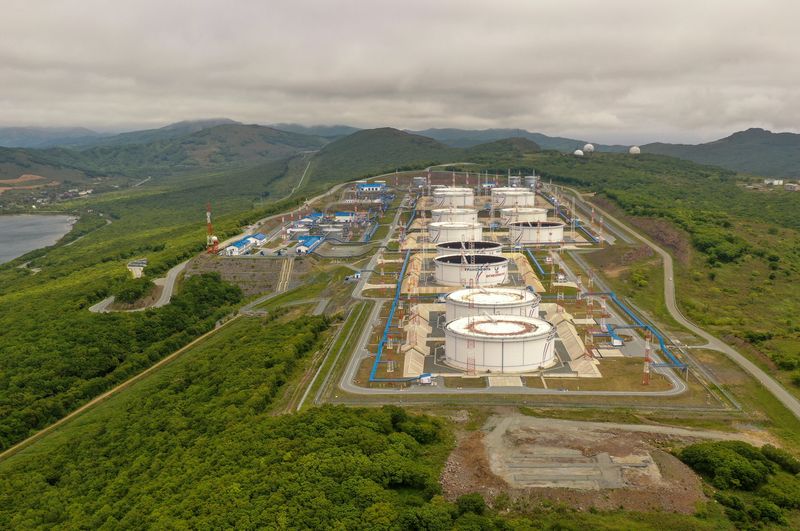Commodities
Oil prices stabilise after Golan Heights attack

By Robert Harvey
LONDON (Reuters) -Oil prices were stable on Monday as fears of a widening conflict in the Middle East after a rocket strike in the Israeli-occupied Golan Heights balanced demand concerns to put a floor under last week’s price losses.
futures lost 33 cents, or 0.41%, to $80.80 a barrel at 1214 GMT. U.S. West Texas Intermediate (WTI) crude futures fell by 29 cents, or 0.38%, to $76.87.
The Brent and WTI benchmarks lost 1.8% and 3.7% respectively last week on sagging Chinese demand and hopes of a Gaza ceasefire agreement.
“A rather muted opening greets oil prices after Middle East tension is back on the menu due to a reported Hezbollah attack,” said PVM analyst John Evans, referring to the strike on Golan Heights.
On Sunday Israel’s security cabinet authorised Prime Minister Benjamin Netanyahu’s government to decide on the “manner and timing” of a response to the attack that killed 12 teenagers and children.
Israel vowed retaliation in Lebanon against Iran-backed Hezbollah, which denied responsibility for the attack. Israeli jets hit targets in southern Lebanon on Sunday.
The tensions have spread to several fronts and are in danger of spilling into a wider regional conflict, sparking investor concerns about the potential impact on crude output from the world’s largest oil-producing region. But to date, output has not been affected.
“Despite renewed geopolitical tensions in the Middle East, the lack of any supply disruptions limits any positive price reaction,” said UBS analyst Giovanni Staunovo.
“Oil demand concerns, driven by weak Chinese economic data, is another factor not helping oil prices at present.”
Data released this month showed that China’s total fuel oil imports dropped 11% in the first half of 2024, raising concerns about the wider demand outlook in the world’s biggest crude importer.
Prices also fell at the end of last week on news that the huge Dangote oil refinery in Nigeria is reselling cargoes of U.S. and Nigerian crude after technical problems at the plant.

Meanwhile, markets are keeping a watch on oil producer Venezuela after the country’s electoral authority said that President Nicolas Maduro had won a third term with 51% of the vote despite multiple exit polls pointing to an opposition win.
The U.S. had previously said it would “calibrate” its sanctions policy towards Venezuela depending on how the election unfolds in the OPEC member nation.
Commodities
Oil prices rise; U.S. crude inventories plunge, Russia-Ukraine truce eyed
Commodities
India’s Reliance to stop buying Venezuelan oil over US tariffs, sources say
Commodities
Oil prices climb on Venezuela supply worries

 Forex3 years ago
Forex3 years agoForex Today: the dollar is gaining strength amid gloomy sentiment at the start of the Fed’s week

 Forex3 years ago
Forex3 years agoUnbiased review of Pocket Option broker

 Forex3 years ago
Forex3 years agoDollar to pound sterling exchange rate today: Pound plummeted to its lowest since 1985

 Forex3 years ago
Forex3 years agoHow is the Australian dollar doing today?

 Cryptocurrency3 years ago
Cryptocurrency3 years agoWhat happened in the crypto market – current events today

 World3 years ago
World3 years agoWhy are modern video games an art form?

 Commodities3 years ago
Commodities3 years agoCopper continues to fall in price on expectations of lower demand in China

 Economy3 years ago
Economy3 years agoCrude oil tankers double in price due to EU anti-Russian sanctions

























